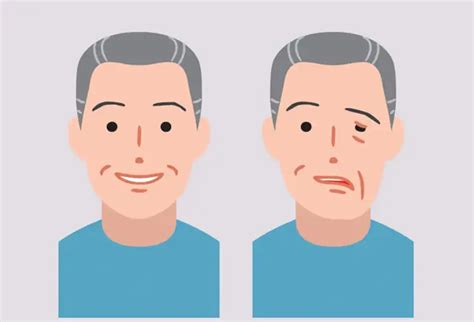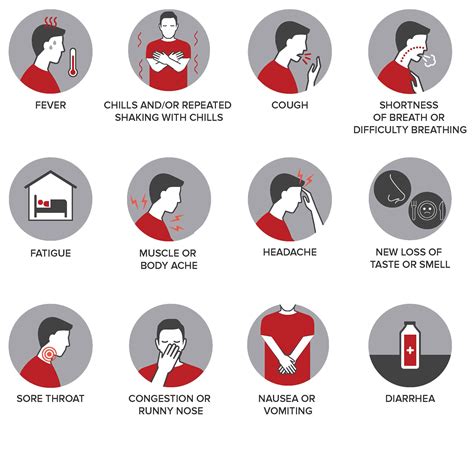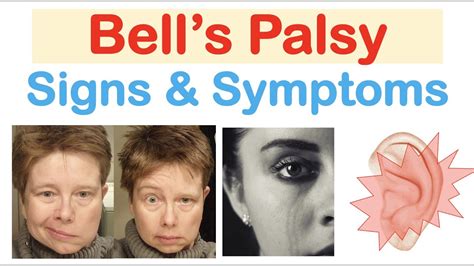Intro
Bells palsy is a condition that affects the facial nerve, causing a range of symptoms that can be distressing and disruptive to daily life. The condition is characterized by sudden weakness or paralysis of the facial muscles, typically on one side of the face. This can lead to a range of physical and emotional challenges, from difficulty speaking and eating to feelings of self-consciousness and anxiety. In this article, we will delve into the symptoms of Bells palsy, exploring the physical and emotional effects of the condition, as well as the potential causes and treatment options.
The symptoms of Bells palsy can vary in severity and impact, but common signs of the condition include weakness or paralysis of the facial muscles, drooping of the eyelid or corner of the mouth, and difficulty speaking or eating. Some people may also experience numbness or tingling in the face, as well as pain or discomfort behind the ear or in the jaw. In severe cases, Bells palsy can lead to complete paralysis of the facial muscles, resulting in a frozen or mask-like expression.
Understanding Bells Palsy

Causes and Risk Factors
The causes and risk factors for Bells palsy are not fully understood, but research suggests that the condition may be linked to a range of factors, including viral infections, autoimmune disorders, and genetic predisposition. For example, people who have had a previous episode of Bells palsy are more likely to experience the condition again, while those with a family history of the condition may also be at increased risk. Additionally, people with certain medical conditions, such as diabetes or high blood pressure, may be more susceptible to Bells palsy.Symptoms and Diagnosis

Treatment Options
Treatment for Bells palsy typically involves a range of therapies and interventions, including medication, physical therapy, and alternative therapies, such as acupuncture or massage. In some cases, surgery may be necessary to relieve pressure on the facial nerve or to repair damaged tissue. The goal of treatment is to manage symptoms, promote recovery, and prevent complications, such as permanent nerve damage or facial disfigurement.Living with Bells Palsy

Coping with Emotional Challenges
Coping with the emotional challenges of Bells palsy is an important part of managing the condition. This may involve seeking support from friends and family, as well as connecting with others who have experienced the condition. Support groups, online forums, and counseling services can provide a safe and supportive environment to share experiences, ask questions, and receive guidance and encouragement.Prevention and Self-Care

Staying Positive and Focused
Staying positive and focused is an important part of managing Bells palsy. This may involve setting realistic goals, practicing self-care, and seeking support from others. By staying positive and focused, it is possible to promote recovery, manage symptoms, and improve overall quality of life.Conclusion and Next Steps

Final Thoughts
Final thoughts on Bells palsy emphasize the importance of seeking medical attention if symptoms persist or worsen over time. With the right treatment and support, it is possible to manage symptoms, promote recovery, and prevent complications. By staying positive, focused, and informed, individuals with Bells palsy can take control of their condition and improve their overall health and well-being.What are the symptoms of Bells palsy?
+The symptoms of Bells palsy include weakness or paralysis of the facial muscles, drooping of the eyelid or corner of the mouth, and difficulty speaking or eating.
What causes Bells palsy?
+The exact cause of Bells palsy is not fully understood, but it is thought to be linked to inflammation or compression of the facial nerve.
How is Bells palsy diagnosed?
+A diagnosis of Bells palsy is typically made based on a physical examination and medical history, as well as a range of diagnostic tests, including electromyography (EMG) and imaging studies, such as MRI or CT scans.
What are the treatment options for Bells palsy?
+Treatment for Bells palsy typically involves a range of therapies and interventions, including medication, physical therapy, and alternative therapies, such as acupuncture or massage.
Can Bells palsy be prevented?
+While it is not possible to completely prevent Bells palsy, there are steps that can be taken to reduce the risk of developing the condition, such as practicing good hygiene, getting regular exercise, and eating a healthy diet.
We hope this article has provided you with a comprehensive understanding of Bells palsy, including its symptoms, causes, and treatment options. If you have any further questions or concerns, please do not hesitate to comment below or share this article with others who may be affected by the condition. By working together, we can promote greater awareness and understanding of Bells palsy, and support those who are living with the condition.
